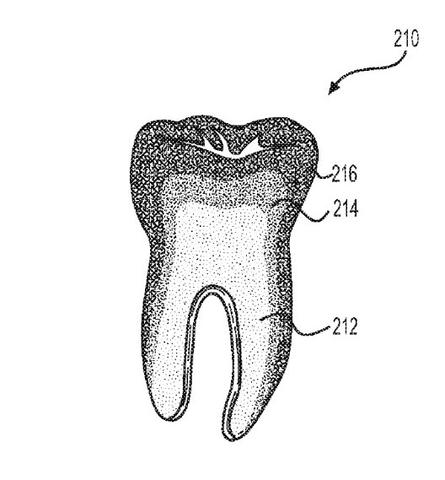Problem
Patent Description
This invention is a new 3D printing process of continuously or discretely controlling composition of photo-polymerization reactants to produce 3D objects with spatially varying chemical, physical and mechanical properties. This invention is based on photo polymerization of liquid reactant (monomer(s) and/or oligomer(s)) mixtures. The overall composition-controlled 3D printing process can be divided into three steps: preparing a reactants mixture, extruding the mixture through a scanning nozzle, and irradiating the mixture for photo-polymerization. The mixture is prepared by blending two or more different reactant liquids supplied from separate reservoirs. The relative composition of each reactant liquid in the mixture can be controlled with a flow controller unit installed between its reservoir and the blending unit. The composition-controlled reactant mixture is extruded onto a substrate through a scanning nozzle with or without a separate flow controller. As the mixture touches the substrate, it is solidified and cured rapidly by photo-polymerization with visible or UV light irradiation. The chemical, physical, mechanical, and biological properties of a printed object can be controlled by (1) relative compositions of reactants in the mixture; (2) flow rate of the mixture liquid; (3) intensity and wavelength of photo-polymerizing light; and (4) scanning nozzle velocity. Additional post-printing processes can be added to improve the final product properties, e.g., photo or heat-annealing for leachable reactants removal.
A major goal of this invention is to manufacture high-throughput, bench-top 3D printing instruments for medical devices, including dental implants, dentures, veneer, catheter, hearing aids, surgical masks, medical filters, blood analysis sensors, needles and syringe. The figure below 210 is an example of a 3D-printed tooth having a varying composition including layers 212, 214, and 216, as in an actual human tooth.

Invention
A computer-controlled method for forming a composition-controlled product using 3D printing includes disposing two or more liquid reactant compositions in respective two or more reservoirs; and mixing the two or more liquid reactant compositions, which in turn includes controlling by the computer a mass ratio of the mixed two or more liquid reactant compositions. The computer-controlled method further includes scanning, under control of the computer, a mixed liquid reactants nozzle over a substrate; depositing the mixed liquid reactant compositions onto the substrate; and operating, under control of the computer, a light source to polymerize the deposited mixed liquid reactant compositions.
Features
This invention makes it possible for a single printing process to produce 3D objects with complex geometry as well as continuously control chemical, physical and mechanical properties within the 3D geometry. Also, this invention allows addition of solid dispersion components into the liquid mixture for specific applications, e.g., filler nanoparticles for dental materials. The photo- polymerization products of the reactants can be durable and bio-compatible resin networks.

